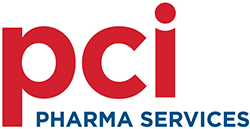KSR: What ESG targets has PCI Pharma Services set and what measures is it currently taking or planning to incorporate?
GBE: PCI’s ESG targets are both deep and broad; they encompass ambitious goals across nine identified impact categories — from sustainability focused practices concerning carbon footprint, responsible waste management and eco-conscious procurement to people-first issues such as health and safety, community impact and DEI (diversity, equity, and inclusion).
Emission reduction is a key priority. Our carbon footprint targets and strategy were developed in alignment with Science Based Targets. By 2030, PCI aims to reduce Scope 1 and 2 greenhouse gas emissions by 40%, cut its energy intensity by 50% and purchase 100% of its energy from renewable sources.
By 2045, PCI aims to achieve a Net-Zero carbon footprint throughout its entire supply chain. These figures are benchmarked against a 2020 baseline, giving us a clear, decade-long “before and after” picture.
Water conservation and waste management are two additional focal points. Regarding the former, PCI plans to reduce its global water consumption by 50% per cubic metre by 2030.
We see this as an especially assertive goal as the pharma sector’s cleanliness and sterility needs are inherently water intensive. In terms of waste management, we’re targeting a 33% reduction in non-hazardous waste by the end of the decade as well as reducing waste sent to landfills by 90%.

We also have plans in place to recycle 100% of reusable waste. Again, these goals are set against 2020 baselines.
Community impact is another crucial area. Among other initiatives, PCI has established a formal giving-back strategy focused on year-over-year increases in employee participation and measurable community impact for each of its global sites and corporate functions. Activities include
- identifying the most critical needs of local communities and partnering with relevant organisations
- communicating volunteer opportunities and encouraging employees to create interest groups
- a novel programme called the ESG Day Initiative, in which employees can log up to 8 hours per year of company sponsored volunteer activities in various categories.
Of course, DEI also plays a vital role in PCI’s ESG strategy. We remain dedicated to enhancing our inclusion and diversity measurements with a particular focus on pay equity and balanced gender and ethnic representation throughout the organisation; this extends to all levels of executive and board leadership.
Notably, these efforts go beyond operations and into the supply chain; with the Supplier Diversity Program, PCI is increasing support for businesses owned by women, minorities and vulnerable groups.
KSR: With many masters to serve and a variety of processes to optimise, what are the main ESG challenges for a contract service provider?
GBE: Incorporating, maintaining and perpetually improving ESG practices brings several challenges to an organisation as diverse and robust as PCI. For starters, our sheer size makes cross-site standardisation a tall task.
With more than 6000 personnel in 30 sites throughout seven countries, it’s no surprise that implementing fair, relatively uniform ESG house rules under one corporate roof takes time, effort and acumen.
Another hurdle involves the nature of being a customer-servicing organisation with a variety of stakeholders — including partners, vendors and investors.
Unsurprisingly, not everyone sees eye to eye on the lengthy list of issues comprising ESG, so sometimes we must simply do our best to square differing, even conflicting, norms and requests.
Always, we must follow our corporate conscience and take the next right action … and not let perfection be the enemy of progress.
Several other issues can pose challenges when it comes to incorporating consistent and comprehensive ESG initiatives. Supply chain complexity can be a potential pain point.
In as complicated and mission-critical a sector as pharma, a prominent CDMO such as PCI is sending and receiving a countless and endless stream of ingredients, products, components and other assets, many with differing transit needs — most prominently cold chain requirements.

Here, sometimes regulatory compliance or common-sense best pharma practices must supersede a best-case-scenario ESG goal. Like any other entity, we must live in the world as it exists while trying to shape the one we want.
And although it’s a “good problem,” employee engagement can also be challenging. PCI does its best to take a bottom-up approach that truly listens to our personnel and addresses their needs as well and completely as we can.
Inherent to this process, of course, is that different people have different opinions. Accepting and respecting that is part of building strength from diversity.
Lastly, climate-related risk management must play a pivotal role in any robust ESG strategy. With adverse weather events likely to become more common, any responsible company must employ strategies such as manufacturing redundancy and alternate sourcing options to best ensure production capacity continuation.
As a company that produces and packages life-saving drugs, we take such continuity planning very seriously.
KSR: From an industry, partner and patient perspective, what benefits are derived from being seen as a sustainable company?
GBE: Being perceived as a sustainable company in the biopharmaceutical industry can yield benefits from multiple perspectives.
From an industry standpoint, ESG initiatives can give a company a competitive advantage by attracting partners, employees and customers who align with an overall vision or specific ESG initiatives.
In addition, having a comprehensive climate risk mitigation programme reduces operational risks and the costs associated with regulatory compliance, supply chain disruptions and organisational reputation.
From a partner perspective, companies that demonstrate genuine commitments to social and environmental responsibility attract other companies, institutions and organisations seeking to associate with sustainable partners.
For instance, companies with Net-Zero Scope 3 emissions — those produced by vendors and other business partners — will only source suppliers with emission reduction goals and strategies in place.
From a patient-centric standpoint, we can safely assume that patients increasingly value companies in the healthcare and medicine supply chain space that showcase sustainable and ethical business practices.
By exhibiting ESG-positive traits, a company can build trust and loyalty among its current and aspirational end-user base. It is also worth noting that environmentally friendly and ethically sourced practices often contribute to improved health and well-being outcomes in society at large.
Increasingly conscientious consumers actively seek out products from companies with strong sustainability credentials.
KSR: The greater pharma industry is thought to suffer from a lack of investment and expertise in terms of achieving net zero. How can this be overcome and can we derive learnings from elsewhere?
GBE: During the last 20-plus years, some organisations in the pharma industry have set strong internal sustainability foundations.
Combined with a consistently increasing focus on environmentalism in society at large, more medium and small biopharma companies are expected to integrate transparency regarding ESG commitments and practices into their short- and long-term strategies.
Of course, ESG-related challenges will not be overcome overnight in any industry. It’s a continuous journey whereby achievements and milestones stand on the shoulders of previous accomplishments.
To obtain meaningful progress and tangible results, ESG must be woven into the fabric of a business.
There are several approaches that can help to counteract pharma’s perceived lack of investment and expertise when working toward a Net-Zero future. One is stakeholder engagement and accountability, including a consistent stream of communication and results reporting.

Technology adoption and innovation also come into play, including leaning into certain digitalisation and automation trends that can help to cut energy consumption or material waste.
Increased collaboration and knowledge sharing also brings merits, especially in a sector such as pharma wherein organisations typically have a “close to the vest” mindset that’s unconducive to the transparent exchange of information and best practices.
And from an overarching perspective, government support and incentives will only further assist and expedite the pharma industry’s broader ESG journey.
We would be well served to collaborate with other industries when it comes to complex supply chain processes and global reach — energy, packaging and manufacturing, to name a few — to develop and hone best practices toward net-zero goals.
Cross-industry partnerships can facilitate increased knowledge and data sharing, yielding the more efficient and expedited adoption of high-impact efforts. Other examples include
- working with waste management companies and recycling industries to develop effective waste reduction strategies
- collaborating with transportation and logistics companies to optimise distribution networks with lower emissions
- partnering with academic institutions and research organisations at the forefront of trends and sustainable innovation.
KSR: What should the industry be doing now to be compliant in the future?
GBE: With looming regulations mandating the reporting of carbon footprints for every pharmaceutical product by 2028, drug companies can and should take a variety of actions.
The first is a clear-eyed review of current practices, including conducting a double materiality assessment and determining the carbon footprint baseline of current manufacturing processes, supply chains and distribution methods.
From there, the time is now to invest in sustainable practices. These can include measures that conserve resources, minimise environmental harm and ensure both equity and fairness throughout the organisation and supply chain (including product lifespans).
It’s also vital to foster collaboration and innovation with suppliers, partners and industry stakeholders, and freely share knowledge about new approaches and best practices.
On a related note, it’s important to prioritise transparency and communication, including regular disclosures about the status, progress and future of ESG plans. This is essential to build trust with business partners, employees and local communities.
Metrics are another key step. Developing and honing data collection and reporting systems helps to ensure adherence to industry approved methodology standards, such as the GHG Protocol.
Finally, it’s never too early to begin compliance preparation. Understanding specific reporting requirements and timelines that are relevant to your specific organisation means allocating resources, increasing internal capacity building and implementing the necessary processes to ensure timely and accurate reporting.

